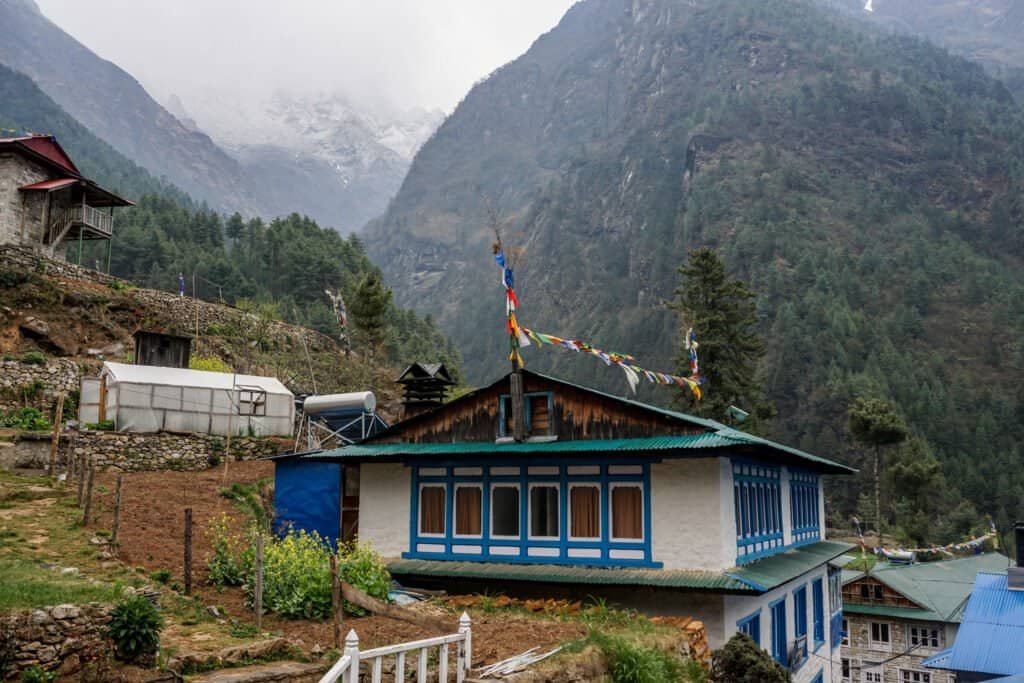Discovering the beauty of the largest peak on Earth is a dream many adventurers chase.
Indeed this journey offers panoramic Himalayan views, ancient trails, cultural gems, and a sense of accomplishment like no other. However, the trail may sound like a fairytale, but a common question arises for people visiting it for the first time: what’s the accommodation actually like?
The answer lies in Nepal’s famous teahouse trekking culture. These are not fancy, high-class resorts, but they have a lot of heart and everything travellers need to feel comfortable.

If you’re considering an adventure of Everest Base Camp trek, this guide will help you to understand what to expect from these teahouses and how to make your journey more comfortable and a whole lot smoother.
Room Setup
When you decide to take on the challenge of Everest base camp trek, you need to be aware of where you’ll be spending your nights. At most teahouses, rooms are simple, clean, and surprisingly cosy, given the high-altitude setting.
Typically, you’ll find twin beds with foam mattresses, a pillow, and warm blankets (though bringing your own sleeping bag is strongly recommended, especially as you climb higher).
Because walls are generally made of thin plywood, it’s best to bring earplugs if you require a lot of peace and quiet to sleep.
You get very little space, but by the end of the long hike, you’re only looking for a comfortable place to lie down.
Toilets And Showers
You will find toilets that flush down in low regions of the trail, but at higher elevations, you’ll use squat toilets.
Some teahouses offer private bathrooms for an extra cost, but most commonly, you’ll share a clean (but basic) facility with another trekker
What about showers? Yes they’re available but expect solar-heated or gas-powered bucket showers, often for an extra fee (especially above Namche Bazaar).
The higher you go, the colder the temperatures and the more you’ll appreciate quick, minimal bathing.
It won’t come as a shock if you treat wet wipes like your friends by the sixth day.
Heating And Warmth
Now, let’s talk about staying warm because it gets cold fast.
At most teahouses, the main dining room is lit by a yak-dung or wood-burning stove that the staff puts on at night. Here, trekkers can find a comfortable social zone where they socialize and drink hot tea or soup.
While common spaces are heated, the rooms are not, so get warm clothes when heading to your room.
At night, layer up with thermals, a sleeping bag rated for low temps, and perhaps even a hot water bottle (available at some teahouses for a small charge).
Food And Dining
You will get to know about the one thing that makes people surprised at teahouses is the food.
Menus are usually diverse, offering everything from local dal bhat (rice, lentils, and veggies) to international dishes like pasta, pancakes, fried rice, and momos (Nepalese dumplings).
There is a lot of food, which is great after you reach the summit, and you are allowed to eat while staying in your cabin.
Teahouses, especially higher up, tend to focus on vegetarian dishes as it gets more difficult to get meat brought in.
It’s good to take a few snacks, though the special food of the country will keep you feeling energetic.
Electricity And Charging
Electricity is available throughout much of the trek, but as you go higher, access becomes more limited and expensive.
Most teahouses will charge you to use electricity for your devices, and prices tend to get higher as you go toward Base Camp.
It’s smart to bring a power bank and/or solar charger, as well as extra batteries.
Plus, If you’re a photographer, place importance on managing your battery to get the best views.
Wi-Fi And Mobile Signal
Wi-Fi on the EBC trail? Yes but with a catch.
Wi-Fi service is commonly available at teahouses for just a bit of money, but internet speeds are usually not very reliable.
You probably can’t stream Netflix, but you should have no problem posting a cool photo or messaging from campus.
Mobile signals are available in many parts of the trail, especially if you get a local SIM card (like NCell or NTC) in Kathmandu.
But again, Higher elevation causes poor cell reception, so when you reach Base Camp, cutting off electronics is pretty much demanded.
Wrap Up
Teahouse trekking is a unique part of the Everest Base Camp trek experience.
The accommodation is simple, and everything is plain, but the kindness of the locals, hot tea in winter, and friendships formed while hiking give a great feeling that cash cannot compare to.
And if you want to make this journey not just easier but exceptional, planning with experienced professionals is a game changer.
With deep local knowledge, logistics expertise, and a passion for the Himalayas, the team at Mosaic Adventure takes the guesswork out of the trek,so, you can focus on the experience itself.
Reach out to Mosaic Adventure today via email at contact@mosaicadventure.com or WhatsApp at https://wa.me/+9779823816556 to start crafting your high-altitude journey.

